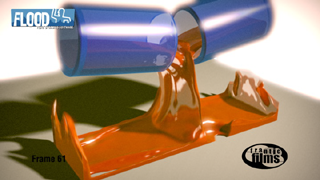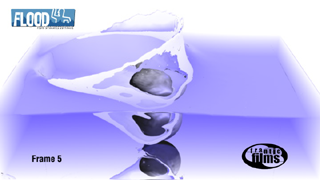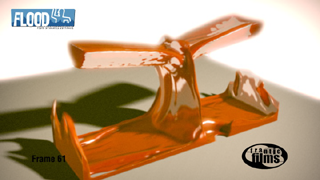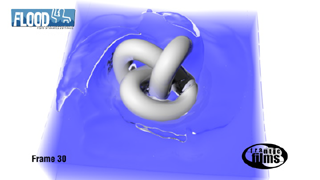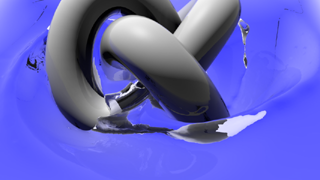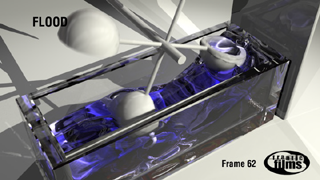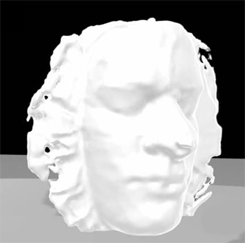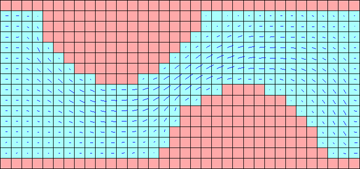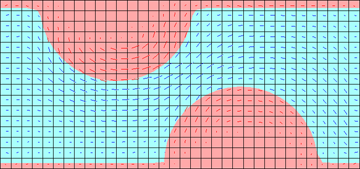A technical sketch presented in the Fluids and Level Sets session at SIGGRAPH 2003
Modeling Complex Occlusions in Fluid Simulations
A Unified Level Set-Based Approach
|
Ben Houston Exocortex Technologies, Inc ben @ benhouston3d.com |
Chris Bond Frantic Films cbond @ franticfilms.com |
Mark Wiebe Frantic Films mwiebe @ franticfilms.com |
|
Overview
Our contribution consists of two parts. The first part involves representing the occlusions via an augmented level set instead of the usual polygon based representations. The second aspect of our contribution consists of a technique called constrained velocity extrapolation, which uses the occlusions level set representation to better capture the subtle effects the occlusions have on the behavior of surrounding fluid. In addition to just more accurate fluid-occlusion interactions the above techniques allow for our arbitrarily shaped, moving occlusions (such as the two cups above) to act as containers for the fluid.
@inproceedings{965561,
author = {Ben Houston and Chris Bond and Mark Wiebe},
title = {A unified approach for modeling complex occlusions in fluid simulations},
booktitle = {Proceedings of the SIGGRAPH 2003 conference on Sketches \& applications},
year = {2003},
location = {San Diego, California},
doi = {http://doi.acm.org/10.1145/965400.965561},
publisher = {ACM Press},
}
More information available on the ACM Digital Library page for this sketch. This research was supported in part by NRC IRAP Grant #482564. |
